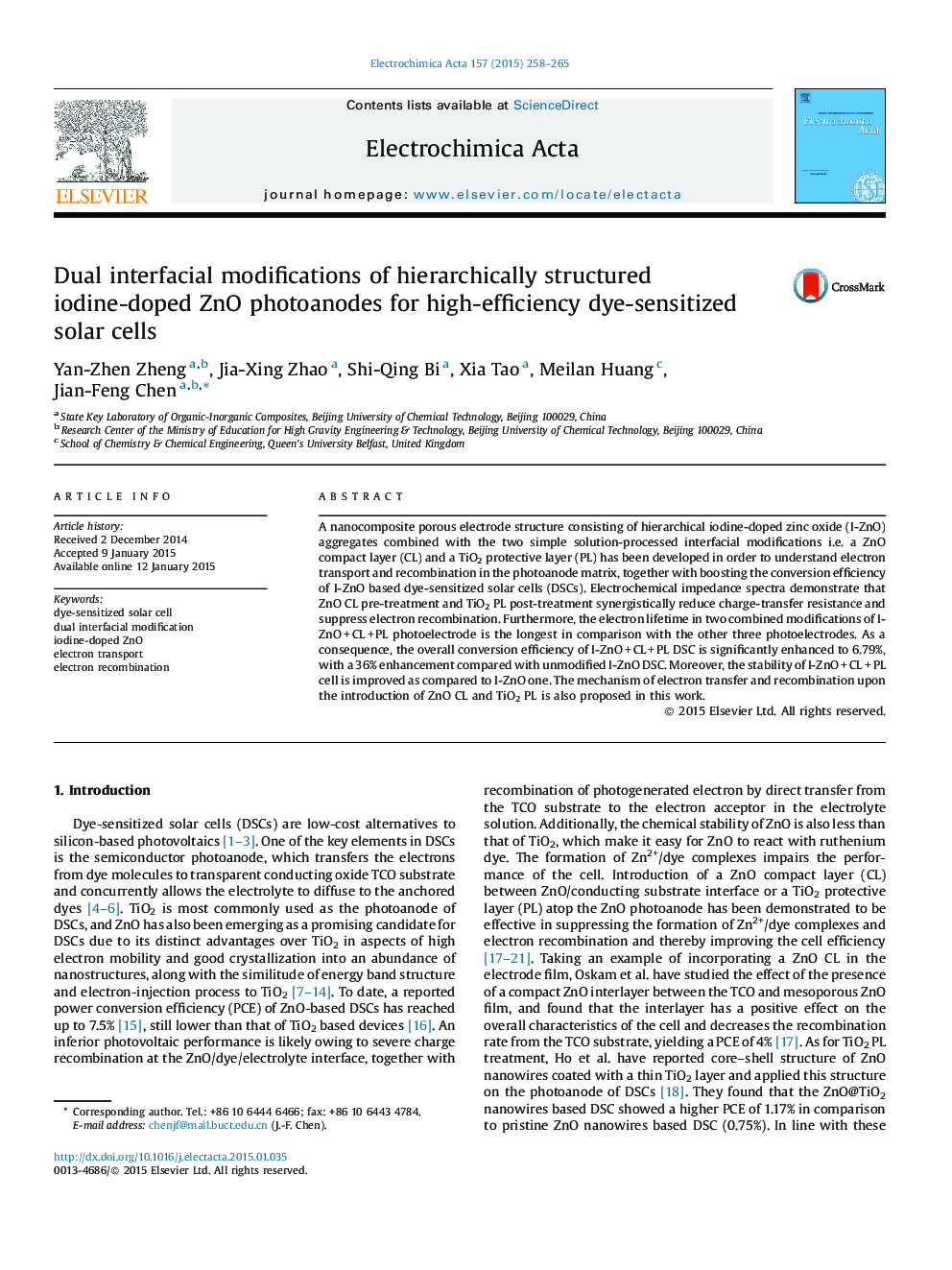| Article ID | Journal | Published Year | Pages | File Type |
|---|---|---|---|---|
| 184639 | Electrochimica Acta | 2015 | 8 Pages |
•Two simple solution-processed interfacial modifications were applied to I-ZnO DSCs.•ZnO CL suppresses electron recombination by reducing back electron transfer.•TiO2 PL retards Zn2+/dye complex formation and inhibits electron recombination.
A nanocomposite porous electrode structure consisting of hierarchical iodine-doped zinc oxide (I-ZnO) aggregates combined with the two simple solution-processed interfacial modifications i.e. a ZnO compact layer (CL) and a TiO2 protective layer (PL) has been developed in order to understand electron transport and recombination in the photoanode matrix, together with boosting the conversion efficiency of I-ZnO based dye-sensitized solar cells (DSCs). Electrochemical impedance spectra demonstrate that ZnO CL pre-treatment and TiO2 PL post-treatment synergistically reduce charge-transfer resistance and suppress electron recombination. Furthermore, the electron lifetime in two combined modifications of I-ZnO + CL + PL photoelectrode is the longest in comparison with the other three photoelectrodes. As a consequence, the overall conversion efficiency of I-ZnO + CL + PL DSC is significantly enhanced to 6.79%, with a 36% enhancement compared with unmodified I-ZnO DSC. Moreover, the stability of I-ZnO + CL + PL cell is improved as compared to I-ZnO one. The mechanism of electron transfer and recombination upon the introduction of ZnO CL and TiO2 PL is also proposed in this work.
Graphical abstractFigure optionsDownload full-size imageDownload as PowerPoint slideWe have utilized dual interfacial modifications i.e. ZnO CL and TiO2 PL to probe and elucidate the inherent beneficial characteristics of an I-ZnO microstructure. ZnO CL has been demonstrated to be able to suppress electron recombination by reducing back electron transfer from FTO to electrolyte. TiO2 PL as a barrier retards the formation of Zn2+/dye complexes and also inhibits electron recombination by decreasing electron trap sites on I-ZnO surface. As a result, a distinguished PCE of 6.79% has been attained for I-ZnO + CL + PL DSC, with a 36% efficiency enhancement in comparison to unmodified I-ZnO cell (5.01%).
